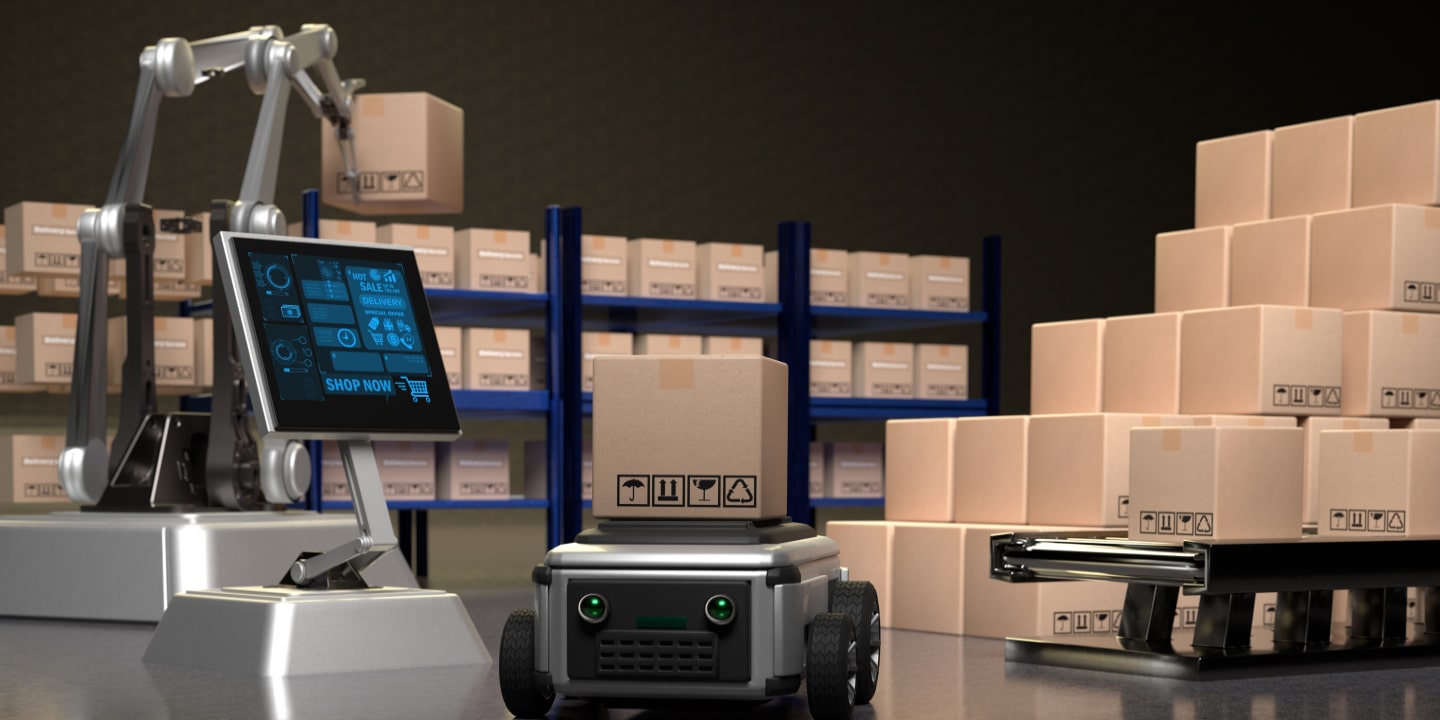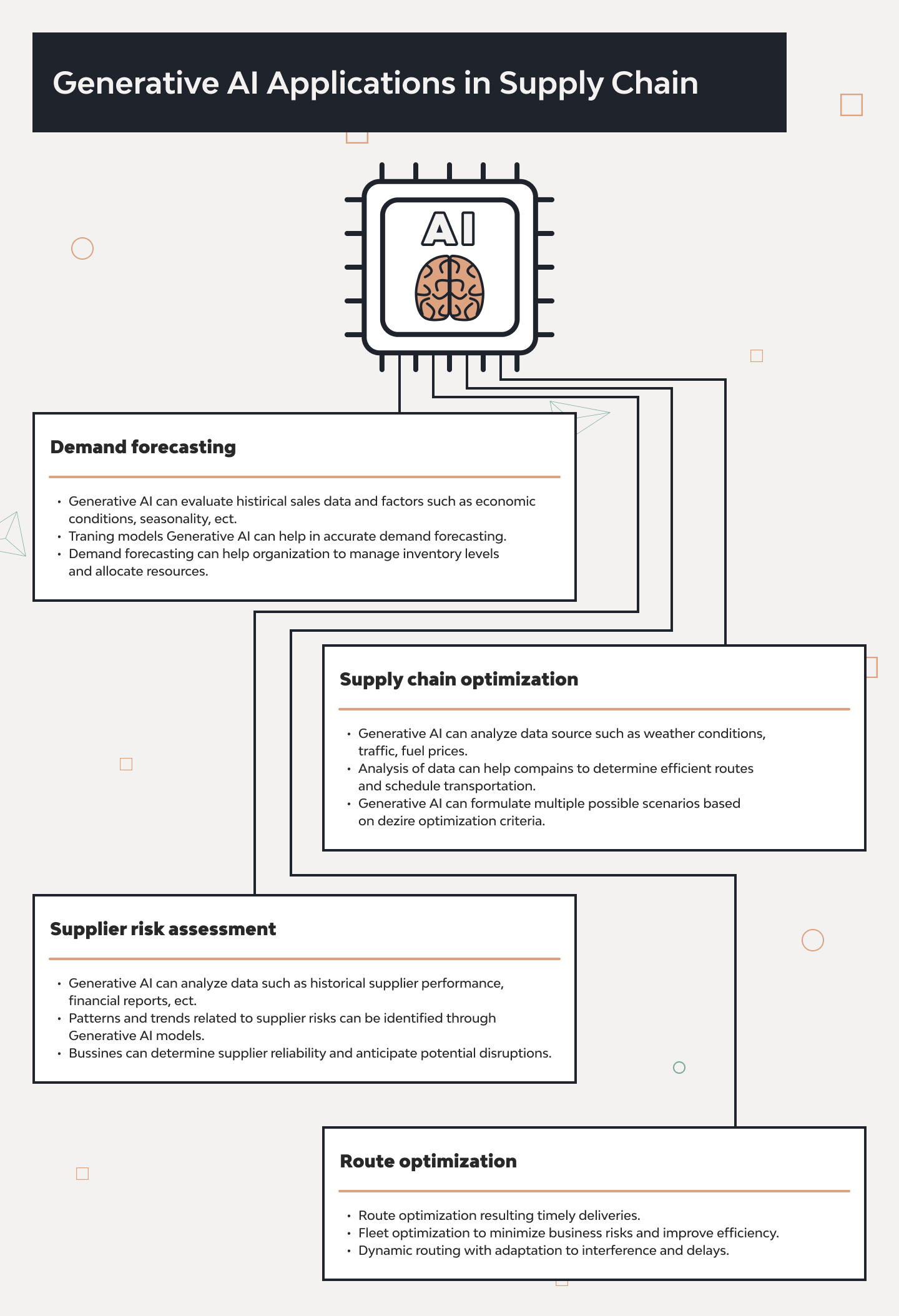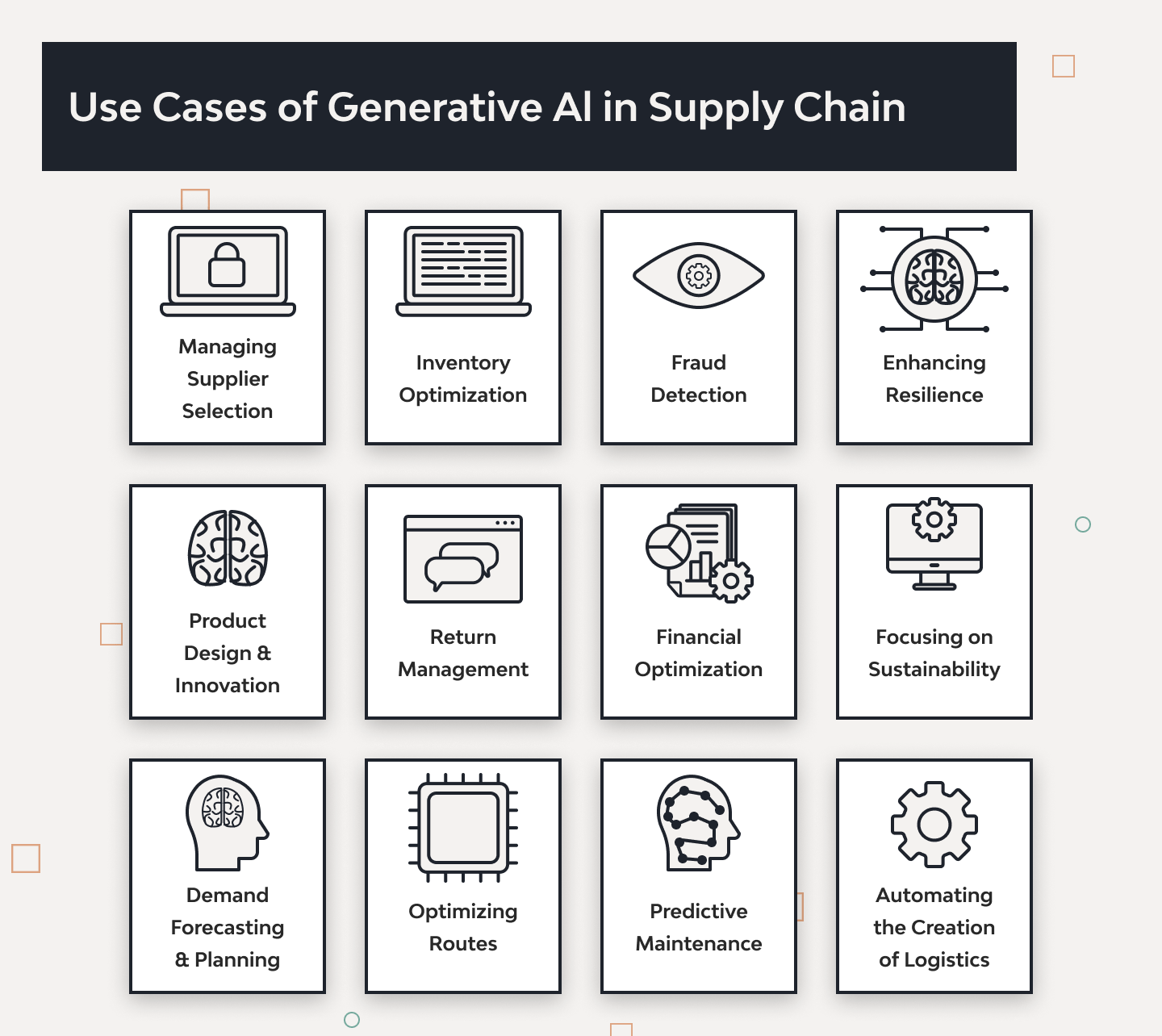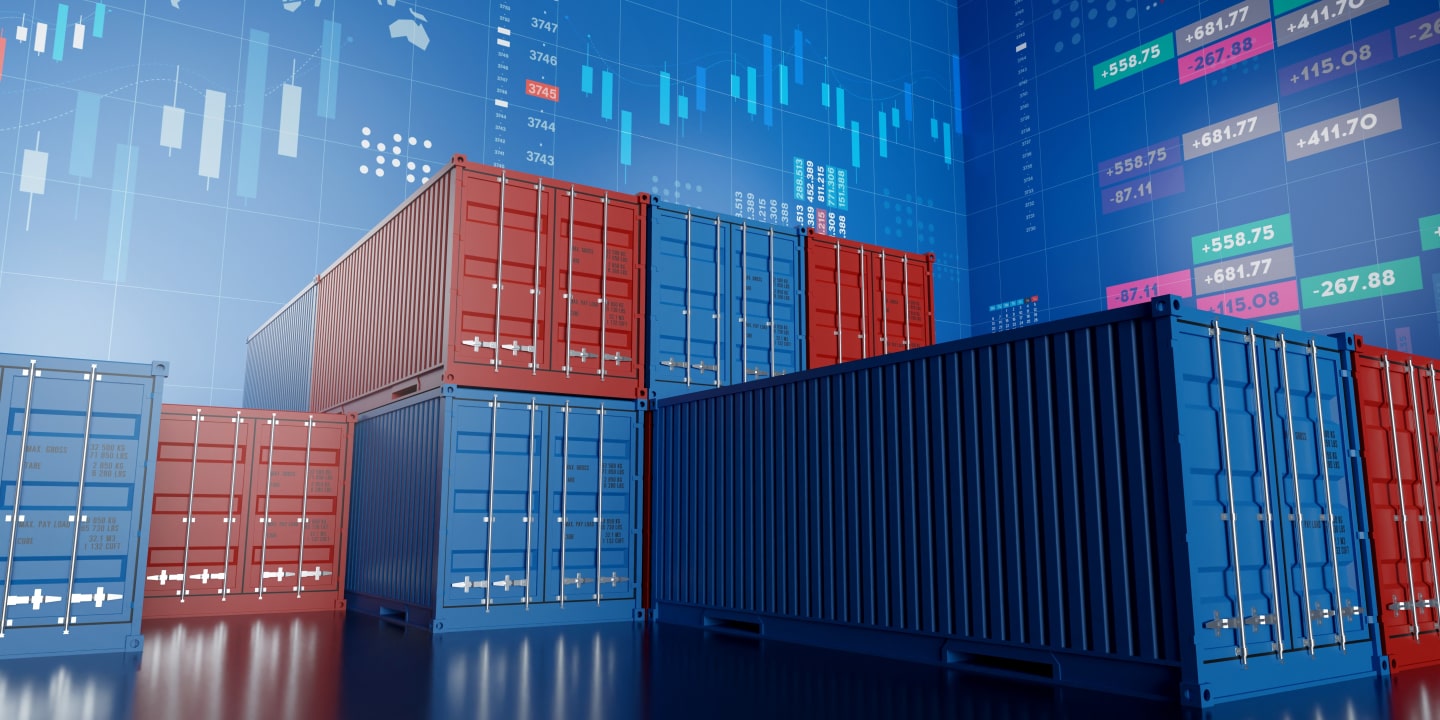Generative AI Use Cases in Supply Chain Management

I’m here to guide you through the exciting realm of ai ml software development services. We’ll explore the transformative impact of Generative AI in the supply chain management. Specifically, I’ll share how our team has used these advancements to optimize supply chain routes and revolutionize conventional logistics approaches.
The developers at Django Stars are known for their technical prowess. In recent projects, we’ve ventured into these innovations, and our journey showcases real-world generative AI use cases in supply chain. I’d say there are enough compelling reasons to examine this technology more closely.
Today’s business world demands efficiency and cost-effectiveness, and AI holds the key. Its potential to enhance route planning and logistics management has garnered widespread interest. I’ve observed this trend within the Django community, and it aligns well with my experiences as a Django developer.
This article aims to:
- Explain Generative AI’s role in supply chain management.
- Spotlight DjangoStars’ success in using Generative AI for route optimization.
- Highlight the broader benefits of AI in supply chain processes.
- Provide insights for logistics companies, regardless of their size.
- Inspire fellow Django developers and supply chain professionals to explore Generative AI’s potential in their operations.
Join me as we explore Generative AI’s impact on the future of supply chain management.
Benefits of Generative AI in the Supply Chain
Let’s dive into the significant advantages that Generative AI brings to supply chain management. I’ll keep it concise and to the point.
- Enhanced Decision-Making. Generative AI provides valuable insights and predictions by analyzing large datasets, enabling well-informed decisions in real time. This minimizes risks associated with supply chain disruptions.
- Increased Efficiency. Generative AI optimizes routes, schedules, and resource allocation. This minimizes delays, reduces fuel consumption, and maximizes resource usage, resulting in faster order fulfillment.
- Cost-Effectiveness. Generative AI identifies cost-saving opportunities, suggesting economical transportation routes, inventory management strategies, and demand forecasts. This reduces operational expenses.
- Scalability. Generative AI solutions are adaptable, catering to businesses of all sizes, from small logistics companies to multinational corporations.
- Risk Mitigation. Generative AI aids in identifying and preparing for potential disruptions, minimizing their impact, and ensuring business continuity.
- Sustainability. Generative AI supports sustainability by optimizing routes to reduce carbon emissions and promoting eco-friendly practices.
I’ve seen how these benefits align with supply chain goals: meeting customer demands efficiently and cost-effectively while minimizing risks. Integrating Generative AI into this landscape offers businesses a competitive edge in a constantly evolving market.
Specific Use Cases of Generative AI in Supply Chain Management
Let’s explore the practical applications of Generative AI in supply chain management. We’ll do it with real-life examples that showcase the transformative power of this technology.
Demand Forecasting
Generative AI employs historical sales data, market trends, and external factors (like weather or holidays) to generate highly accurate demand forecasts. For instance, Walmart uses Generative AI to predict customer demand for various products, enabling them to optimize inventory levels and reduce overstocking or understocking issues.
Inventory Optimization
Amazon’s fulfillment centers are a prime example of Generative AI’s impact on inventory management. Advanced algorithms determine the optimal placement of products, reducing the time and effort needed to fulfill customer orders while minimizing storage costs.
Predictive Maintenance
Rolls-Royce uses Generative AI to predict engine maintenance needs in its aircraft. Sensors collect data on engine performance, and AI algorithms analyze it to forecast when maintenance is required. This prevents costly unscheduled downtime.
Route Optimization
The transportation industry relies heavily on route optimization. UPS utilizes Generative AI to optimize delivery routes. It considers traffic, weather, and package weight. Generative AI for the supply chain industry minimizes fuel consumption and reduces delivery time.
Fraud Detection
Financial institutions leverage Generative AI to detect fraudulent transactions within the supply chain. They can identify potential fraudulent activities and mitigate risks by analyzing transaction patterns and flagging anomalies.
Risk Management
A real-world example is Maersk, a global shipping company. They employ Generative AI to assess geopolitical and environmental risks. Maersk can make informed decisions to minimize supply chain disruptions by analyzing data on shipping routes, weather conditions, and global events.
Relationship Management
Online retailers like Amazon use Generative AI to enhance customer and supplier relationships. The system analyzes browsing and procurement history to suggest relevant products, creating a personalized shopping experience.
Product Design
Generative AI has been used by companies like GE to optimize product design. It generates thousands of design iterations and evaluates their performance, resulting in more efficient and innovative products.
Returns Management
Online fashion retailer ASOS employs Generative AI to manage returns. By analyzing return data, the AI system identifies trends, such as common reasons for returns, allowing ASOS to make improvements and reduce return rates.
Supply Chain Optimization
Unilever is a prime example of generative AI use cases in supply chain. They use AI to optimize manufacturing processes, distribution, and logistics, resulting in significant cost savings and improved sustainability.
Implementing Generative AI in Your Supply Chain
As a Django developer, I understand the need for a practical approach when integrating generative AI for supply chain optimization. Here’s a detailed step-by-step guide enriched with practical insights:
Step 1. Define Objectives
Start by clearly outlining your supply chain goals. Whether it’s reducing costs, improving accuracy, or enhancing customer satisfaction. Having well-defined objectives is crucial for measuring success.
Step 2: Data Collection
Gather diverse and high-quality data from various supply chain sources. This includes historical records, customer data, inventory information, and relevant data points. Tools like Python’s Pandas and NumPy can help streamline data collection and preprocessing.
Step 3: Choose the Right Tools
Select Generative AI tools or platforms that align with your supply chain objectives. Consider integration ease, scalability, and industry-specific models. Tools like TensorFlow, PyTorch, or cloud-based AI services (AWS, Azure) are popular choices.
Step 4: Model Development
Collaborate with data scientists to create customized models tailored to your supply chain challenges and aligned with your defined objectives. Tools such as Jupyter Notebooks, Databricks, or Google Colab can facilitate collaborative model development.
Step 5: Integration
Seamlessly integrate Generative AI into your existing supply chain systems and workflows. When building knowledge-based AI systems that require document retrieval and analysis, ensure your development team can handle RAG interview questions to validate their expertise in implementing Retrieval-Augmented Generation architectures for supply chain documentation and knowledge management. Django can serve as an excellent tool for creating APIs and data pipelines to facilitate integration.
Step 6: Training and Testing
Train AI models with historical data and rigorously test their performance against real-world scenarios. Be ready to refine models as needed based on testing results. Platforms like MLflow or Kubeflow can aid in tracking and managing model training.
Step 7: Deployment
Begin deploying Generative AI solutions gradually, possibly starting with pilot projects. This allows for issue identification and stakeholder buy-in. Tools like Docker and Kubernetes can help streamline deployment and scaling.
Step 8: Monitoring and Maintenance
Continuously monitor AI performance and set up systems to track key performance indicators (KPIs). Be prepared to update and fine-tune models as supply chain dynamics change. Tools like Prometheus and Grafana are valuable for monitoring.
Step 9: Employee Training
Invest in employee training to ensure they can work effectively alongside Generative AI systems.
Step 10: Evaluation
Regularly evaluate the impact of Generative AI on your supply chain operations, measuring improvements in efficiency, cost savings, and customer satisfaction. Adapt strategies based on these evaluations. Tools like Tableau or Power BI can assist in data visualization for evaluation purposes.
Integrating Generative AI into your supply chain can drive positive change, positioning your company for success in an ever-evolving market.
Generative AI Implementation Challenges in Supply Chain
Integrating Generative AI into your supply chain holds immense promise but comes with notable challenges. Here’s a closer look at the hurdles you might face and practical considerations for addressing them:
- Data Quality and Availability is crucial. Implement data validation and cleaning processes, invest in data infrastructure, and consider data partnerships to enhance data quality.
- Data Privacy and Security is paramount. Comply with data protection regulations, encrypt data, and implement access controls. Utilize secure AI platforms that prioritize data privacy.
- Integration Complexity can be intricate. Plan integration carefully, seek interoperability solutions, and consider APIs or middleware for smooth data flow between AI and legacy systems.
- Skill Gap. Building AI expertise may be necessary. Train existing staff, hire AI specialists, or partner with AI consulting firms to bridge skill gaps and ensure successful implementation.
- Scalability. Scaling AI solutions for growing supply chain needs is a challenge. Select scalable AI platforms, invest in cloud-based solutions, and monitor system performance to ensure scalability.
- Change Management. Managing workforce adaptation is key. Provide comprehensive training, communicate changes effectively, and involve employees in the transition to ensure a smooth integration process.
- Cost Considerations. Calculate the cost-effectiveness of AI implementation. Create a clear budget that includes initial setup costs and ongoing maintenance expenses. Assess the potential ROI to justify investments.
- Ethical Concerns. Address ethical implications proactively. Develop AI ethics guidelines, conduct regular ethical audits, and ensure transparency in AI decision-making processes.
- Regulatory Compliance. Stay abreast of evolving regulations. Appoint a compliance officer, monitor legal developments, and update AI practices to meet new regulatory requirements.
- Real-World Adaptation:. Test AI models rigorously in real-world supply chain scenarios. Incorporate real-time data, adapt algorithms to changing conditions, and continuously refine models for practical applications.
To implement these considerations effectively, collaborate across departments, invest in data management, and establish clear governance structures. Regularly assess the impact of AI on your supply chain and adjust strategies accordingly. Remember that successful Generative AI implementation hinges on a holistic approach that addresses both technological and organizational aspects.
DjangoStars as Your Generative AI Experts
DjangoStars is a prominent software development company with generative AI use cases in logistics and transportation. We excel in Generative AI and have successfully integrated this cutting-edge technology into numerous supply chain projects.
Our experienced team consists of Django developers, data scientists, and AI experts. We have crafted tailored Generative AI solutions to optimize routes, enhance demand forecasting, and streamline inventory management. Our projects span various industries, from e-commerce and manufacturing to logistics and healthcare.
Our reputation as a leading force in logistics software development stems from our unwavering commitment to excellence and innovation. If you’re considering Generative AI for your supply chain, DjangoStars is here to guide you through every step of the process from idea to production.
Conclusion
Generative AI in supply chain management stands as a transformative force. Its ability to optimize routes, forecast demand accurately, and streamline processes is invaluable for stakeholders striving to maintain the competitiveness and efficiency of their businesses.
Key takeaways:
- Generative AI offers benefits like enhanced decision-making, efficiency, and cost-effectiveness.
- Specific use cases of generative AI in supply chain include demand forecasting, inventory optimization, and route optimization.
- Implementing Generative AI requires a strategic approach, encompassing data collection, model development, integration, and ongoing evaluation.
- Challenges like data quality and integration complexity must be thoughtfully addressed.
DjangoStars has use cases of generative AI in logistics. We can be your trusted partner in leveraging this technology for supply chain optimization, artificial intelligence crm, or intelligent knowledge management—turning scattered documents into reliable, source-linked answers across the enterprise.
.
- How can businesses start implementing generative AI in supply chains?
- Begin by defining clear objectives, gathering quality data, selecting AI tools, collaborating with experts, and starting with pilot projects for gradual implementation.
- Can generative AI solutions be customized for unique supply chain scenarios?
- Yes, generative AI solutions are highly customizable and can be tailored to specific challenges and objectives within different supply chain scenarios.
- What are key data privacy and security considerations in generative AI implementation for supply chains?
- Implement access controls, encryption, and compliance with data protection regulations to safeguard sensitive supply chain data.
- How can organizations ensure their workforce effectively collaborates with generative AI systems?
- Provide comprehensive training programs to help employees understand AI-generated insights and integrate AI into their daily routines.
- What are potential ethical concerns in using generative AI in supply chain management, and how can they be addressed?
- Ethical concerns, like biased AI decision-making, can be addressed through AI ethics guidelines, ethical audits, and ensuring transparency in AI processes.












